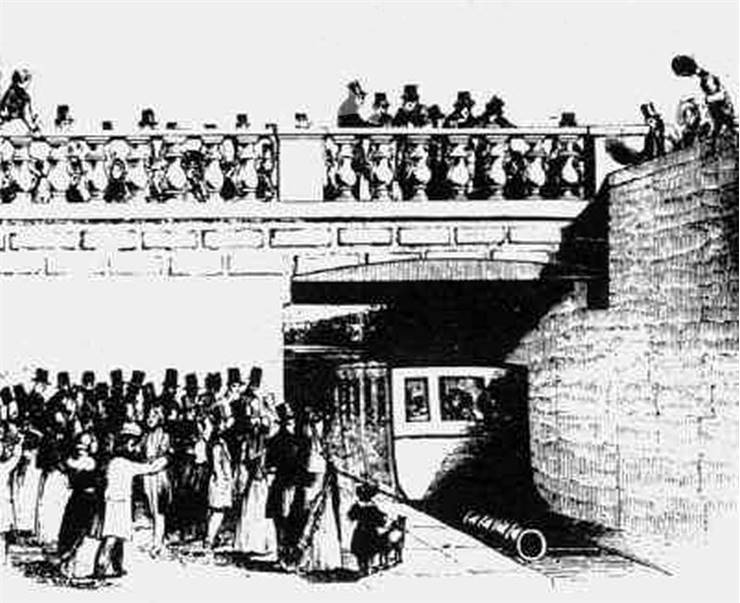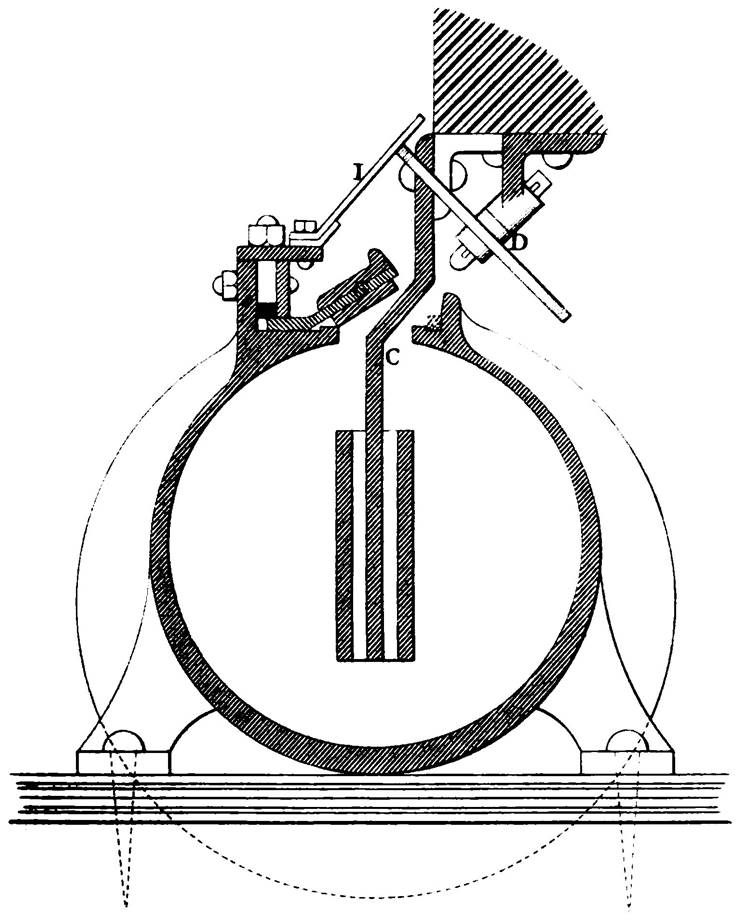Atmospheric Railway History and Facts
Atmospheric railway is a railway that uses differential air pressure to provide its propulsion. It has a static power source and it doesn't have to carry it on the vehicle as it is the case with other types of railway.
General principle of an atmospheric railway is that air pressure is conveyed through a continuous pipe and that pressure moves the piston onto which a vehicle is connected. In some cases vehicle can be placed inside a pipe and it can act as a piston.
Ideas about railway powered by compressed air appeared even before railway became popular as a method of transport. But steam locomotives gave those ideas a boost. Problem with standard steam locomotive s of that time was that they were much heavier that wagons they pulled so it happened that they broke the rails. They also had problems with adhesion because of their weight and because rails and wheels were polished from use (but mainly because of weight). Engineers of that time tried to solve those problems. Some proposed atmospheric railway.

George Medhurst (1759 - 1827) was a mechanical engineer and inventor and, in 1799, he patented the wind pump whose purpose was to compress air to obtain motive power. His next patent was so-called “Aeolian” engine for vehicles which used compressed air. His idea was to equip coaches with “Aeolian” engine and place pumping stations along their route. He further developed idea by publishing “A new method of conveying letters and goods with great certainty and rapidity by air” in 1810 but, for some reason, he didn't patented it. Same happened with his ideas in 1812 for transport of “goods and passengers upon an iron road through a tube of 30 feet in area by the power and velocity of air”. He also had an idea for carriage that runs on rail on compressed air but with the pipe that is in the ground. These ideas were not put in use until much later. The first experimental version of atmospheric railway was performed in 1824 by a man we just know as Vallance. He built a short line out of a pipe that had a diameter of 1.8 m and rails inside and at the bottom. His system worked but it was not a commercial success. Henry Pinkus experimented in 1835 with a line alongside the Kensington Canal with a small-bore vacuum tube but didn't succeeded to attract any investors.
Many tried after that but they mainly concentrated on a variant where a pipe and a coach are connected via piston but otherwise separated. Dalkey Atmospheric Railway in Ireland worked for ten years with this system, from 1840 to 1850. Railway Paris - Saint Germain had extension that was 1.5 km long and had two pipe between rails for piston and pumps powered by two steam engines at one end. Britain had their atmospheric railway between Forest Hill and West Croydon and an extension of Bristol and Exeter Railway to Plymouth which was built by Isambard Kingdom Brunel himself.
This type of railway fell out of favor with appearance of more powerful steam locomotives and later more modern variants. But that doesn’t mean it disappeared. Aeromovel Corporation of Brazil developed an automated people mover at the end of 20th century that works on principle of atmospheric railway. It is put in operation in 2013 and is now in operation at Porto Alegre Airport, Brazil. There is also a system in Taman Mini Indonesia Indah, Jakarta, Indonesia. Flight Rail Corp has their model but it is still just that – literally a working model. Only problem is that it is still not fully finished and some problems are still not solved.


